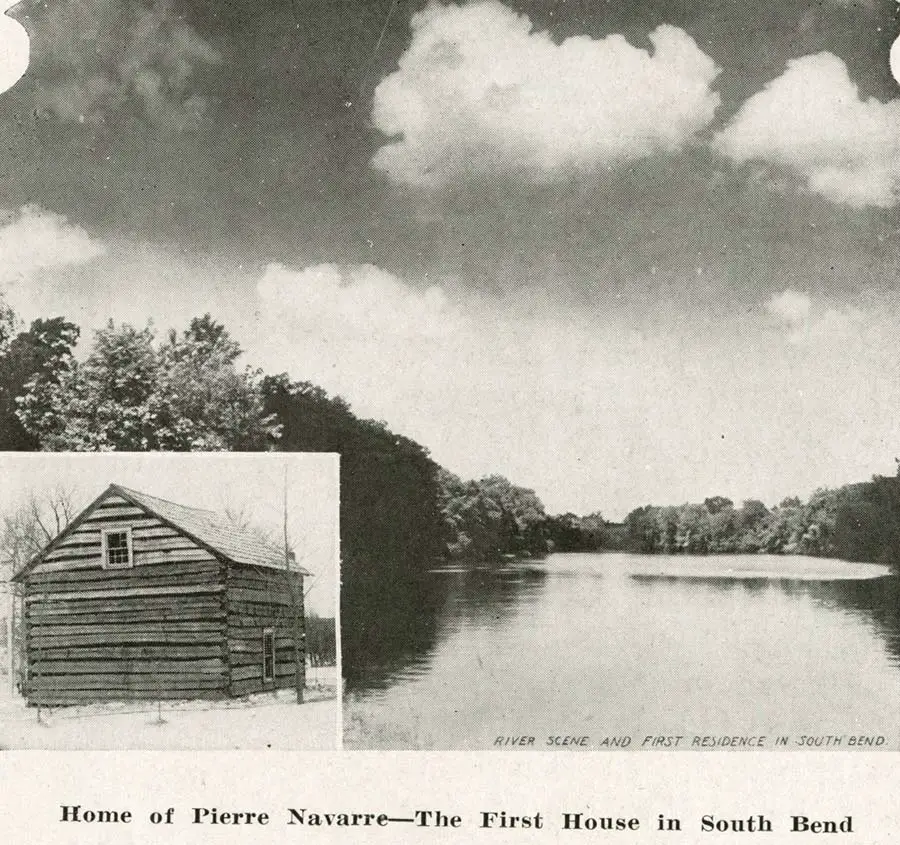Who was the second person to build a working airplane? The third African American to play professional baseball?
History records them all, but it is the “first” to do something that often captures the public’s attention.
Take Pierre Navarre, for example.
Navarre is often credited as the “first” person of European descent (French, specifically) to settle in St. Joseph County. Before 1820, Pierre worked for the American Fur Company. He trapped animals, skinned them for their fur, and then traded those furs with the Potawatomi peoples living here. In 1820, he decided to put down some roots, building a cabin and making a home along the St. Joseph River near what we now know as Leeper Park. He married one of those Potawatomi people and “raised a family of some half dozen children” (some sources suggest as many as ten).
Of course, Pierre Navarre was far from the “first” person to settle in St. Joseph County. Our city is the ancestral home of the Miami and Potawatomi Nations, people who lived and worked in the areas we now call Indiana, southwest Michigan, and Ohio for at least two centuries before Pierre Navarre existed.
In the 1840s, as more people of European descent came into our “unbroken wilderness,” they forcibly removed the Native peoples because, “forests were to be felled, cabins erected, mills built and the rivers and creeks made to labor for the benefit of mankind.”
Fortunately, the Pokagon Band of the Potawatomi is still an active culture in our community, persevering despite centuries of encroachments upon their lives and livelihoods. This past summer, several traveled to Washington, D.C. to share elements of their culture at the Smithsonian Institution’s National Museum of the American Indian.
If we heroize the “first” people in our community, let’s be sure we heroize the people who lived here long before Pierre Navarre. He, and those of us that followed him, will always be second.
Sources:
Chas. C. Chapman, History of St. Joseph County, Indiana. (Chicago: Chas. C. Chapman, and Company, 1880).
“The History Museum » Local History,” accessed January 6, 2015, http://www.historymuseumsb.org/research-history/local-history-2.
“Miami People,” Wikipedia, the Free Encyclopedia, December 15, 2014, http://en.wikipedia.org/w/index.php?title=Miami_people&oldid=638231684.
“Potawatomi,” Wikipedia, the Free Encyclopedia, December 24, 2014, http://en.wikipedia.org/w/index.php?title=Potawatomi&oldid=635818783.
“Pokagon Band of Potawatomi Indians,” Wikipedia, the Free Encyclopedia, January 3, 2015, http://en.wikipedia.org/w/index.php?title=Pokagon_Band_of_Potawatomi_Indians&oldid=637225891.
Image Credit: St. Joseph County Public Library, Michiana Memory Collection, michianamemory.sjcpl.org.
About the Author: George Garner is a graduate of Kutztown University (Pennsylvania) with a bachelor’s degree in history and the Cooperstown Graduate Program (New York) with a master’s degree in museum studies. Garner gained experience in museum administration, exhibitions, education, and collections care at such well-known institutions as the National Baseball Hall of Fame and Museum and the Chesapeake Bay Maritime Museum in St. Michael’s, Maryland. Garner currently works with the Studebaker National Museum and the Indiana University South Bend Civil Rights Heritage Center.
————











